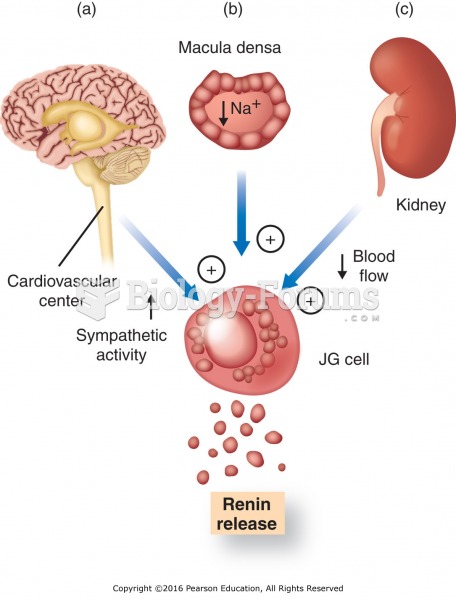This topic contains a solution. Click here to go to the answer
|
|
|
Did you know?
Approximately one in four people diagnosed with diabetes will develop foot problems. Of these, about one-third will require lower extremity amputation.
Did you know?
About 3.2 billion people, nearly half the world population, are at risk for malaria. In 2015, there are about 214 million malaria cases and an estimated 438,000 malaria deaths.
Did you know?
More than nineteen million Americans carry the factor V gene that causes blood clots, pulmonary embolism, and heart disease.
Did you know?
Methicillin-resistant Staphylococcus aureus or MRSA was discovered in 1961 in the United Kingdom. It if often referred to as a superbug. MRSA infections cause more deaths in the United States every year than AIDS.
Did you know?
On average, the stomach produces 2 L of hydrochloric acid per day.
 Cleanse a linear wound by using a new sterile gauze pad for each stroke, beginning next to the wound ...
Cleanse a linear wound by using a new sterile gauze pad for each stroke, beginning next to the wound ...
 Overview of factors affecting renin release: (a) activation of the sympathetic nervous system; (b) ...
Overview of factors affecting renin release: (a) activation of the sympathetic nervous system; (b) ...






